What is the S&P 500 Index?
The S&P 500 Index is a North American equity indice. It represents 500 of the largest publicly traded companies in the United States, on the NYSE and NASDAQ. It covers a diverse range of industries, providing a broad snapshot of the U.S. economy. The index is weighted by market capitalisation, ensuring that larger companies have a more significant impact on its performance, and also ensuring that companies can be added and deleted to the list as they become eligible.
Historically, the S&P 500 has delivered an average annual return of about 10%, making it a favoured choice for long term investing. Its inclusion of individual stocks from various sectors ensures a diversified portfolio, reducing the risk of the indice being influenced by the performance of any single company or particular sector.
Why Invest in S&P 500 Stocks in 2025
Investing in S&P 500 Stocks in 2025 represents a compelling opportunity due to several factors.
The most important reason is that these stocks are unlikely to fluctuate substantially more than the index's performance. And the performance has been robust, gaining 23% during CY24. This upward trend has driven by strong performances in sectors such as technology, artificial intelligence sectors with stocks like Nvidia, Super Micro Computer and Qualcomm leading the charge.
We also observe that the performance of the indice and stocks in it tends to track the U.S. economy, which has performed very well since the pandemic and is expected to be aided by the rate cutting cycle that commenced in 2024. Furthermore, the index’s inherent diversification mitigates risks, making it suitable for both seasoned investors and those new to stock investing.
Get the Latest Stock Market Insights for Free with
Stocks Down Under & Pitt Street Research
Join our newsletter and receive exclusive insights, market trends, investment tips, and updates delivered directly to your inbox. Don't miss out!
Current Market Trends in US
The current stock market trends in the U.S. are shaped by several key factors. Firstly, interest rates remain a significant focus, with the Federal Reserve's policies having a profound impact on market movements. The Federal Reserve maintained its its target federal funds interest rate range between 0.00% and 0.25% from March 2020 to March 2022 before hiking it to 5.25-5.5% between than and July 2023, marking the highest target range since 2001. This high-interest-rate environment aimed to curb inflation but also influences borrowing costs, consumer spending, and corporate profits. Seemingly, it achieved its purpose, because rates have been on the way down and are 4.25-4.5%.
Despite the challenges posed by high inflation, U.S. stocks have performed exceptionally well, with the S&P 500 up over 20% in 2024. This robust performance can be attributed to the resilience of growth stocks, especially within the technology sector. Companies such as Apple, Microsoft, and Meta have experienced substantial appreciation, driven by strong earnings reports and continued innovation. For instance, Apple’s stock has surged due to strong iPhone sales and growth in its services division, while Microsoft has benefited from its cloud computing services and AI initiatives. But Nvidia has taken the cake, with investors seeing this company as the way to gain exposure to the growth in AI. And can you really blame investors given the company's spectacular top and bottom line growth?
The market is closely monitoring key economic indicators such as the Consumer Price Index (CPI) and employment data. In February 2025, the CPI increased by 2.8% year-over-year, down from the peak 2022 inflation levels of 9.1%, but still slightly ahead of the Federal Reserve's 2% long-term target. This indicates persistent inflationary pressures, which the Fed aims to manage through its interest rate policies. Employment data also plays a crucial role; in February 2025, the U.S. economy added 150,000.
Global events significantly influence the stock market, affecting investor sentiment and market volatility. Geopolitical tensions, such as the ongoing conflict between Russia and Ukraine and the tensions between the Trump administration and the rest of the world, have disrupted global supply chains and heightened market uncertainty.
Moreover, the market’s reaction to corporate earnings reports has been positive, with many companies surpassing expectations. The S&P 500 companies reported better-than-expected first-quarter earnings growth of 6% year-over-year, the best past performance since the first quarter of 2022. This growth has been particularly strong in sectors like technology and communication services, artificial intelligence sectors, while sectors such as materials, healthcare, and energy have seen declines in earnings.
10 Best S&P 500 Stocks to Buy Now in 2025
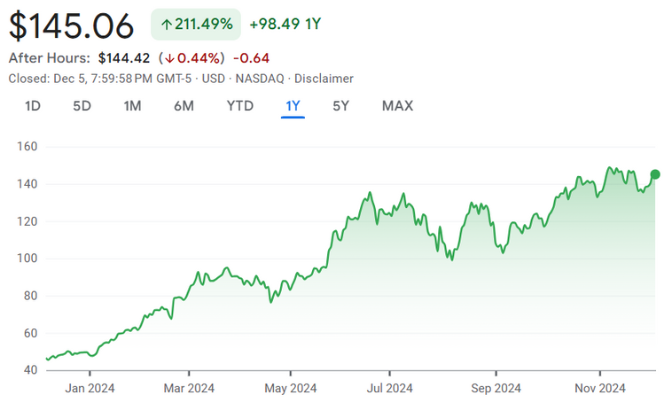
Nvidia (NDQ:NVDA)
Nvidia is a manufacturer of specific computer chips called Graphics Processing Units (GPUs). GPUs act as the 'brain' of many AI technologies including computers, robots and self-driving cars. The stock is trading around $130 post-split, making it more accessible to individual investors even though it is capped at over US$3tn.
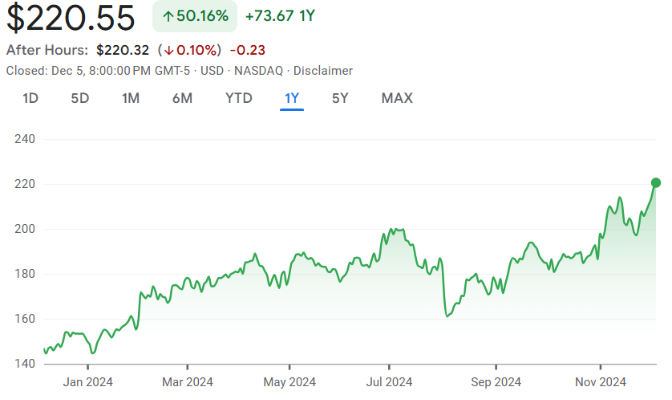
Amazon (NDQ:AMZN)
Amazon is a diverse company, known most particularly for its online eCommerce offerings and AWS Cloud business. It isn't the highest margin business, but has seen spectacular growth in recent years, especially in Cloud Services, and has a dominant market position. It has undergone generational change with founder Jeff Bezos being succeeded by AWS pioneer Andy Jassy.
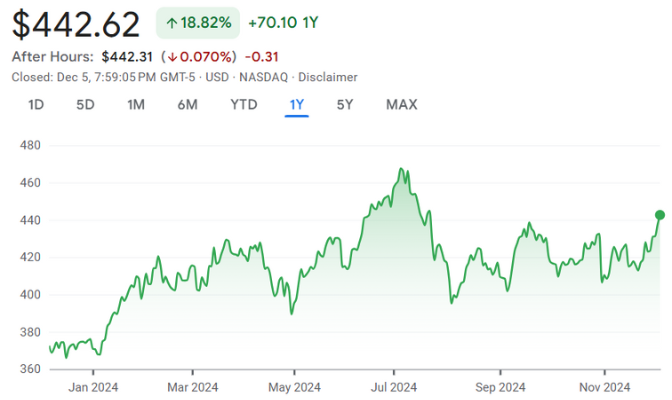
Microsoft (NDQ:MSFT)
Microsoft is one of the world's largest computing companies offering hardware and software services. It is easy to think a US$3tn company can't get bigger, but it is in a box seat to capture the continued growth in the Cloud given growing demand and the company's continued investment in it.
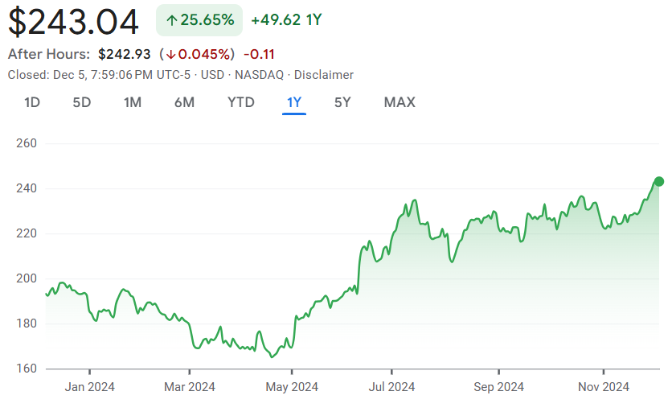
Apple (NDQ:AAPL)
Apple is arguably the world's most iconic brand, making technological devices and services. The Steve Jobs era is long gone, but the company has grown its market cap 10-fold since then and continues to make modest innovations such as the Apple Watch (now a bigger business than the iPod at its peak), as well as insourcing its chip supply chain.
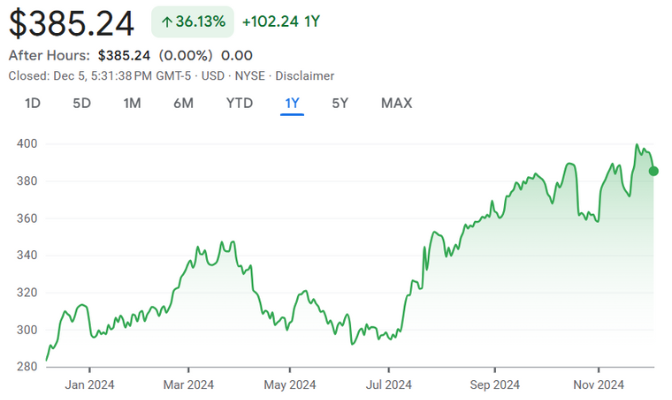
Sherwin-Williams (NYSE:SHW)
Sherwin-Williams is a 157-year-old paint company from Cleveland, Ohio. Theoretically, a paint company should only be growing at GDP. But it has managed to deliver a heck of a lot more for its shareholders and has so many desirable traits. It sells in 120 countries, has a CEO who's been with the company for 40 years, raised its dividend for 44 straight years and has huge control over its supply chains.
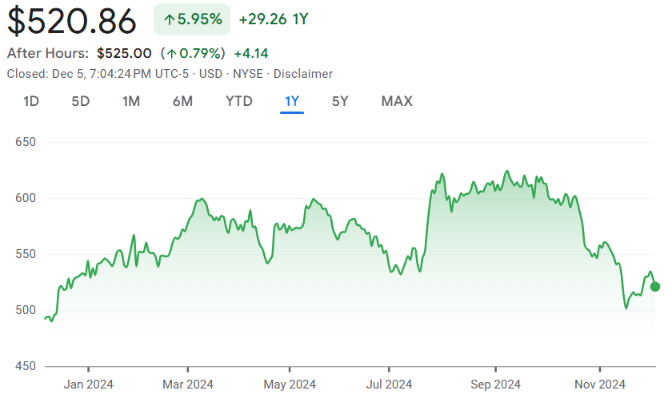
Thermo Fisher (NYSE:TMO)
Thermo Fisher is a world leading health company. You name something to do with healthcare and it is more likelier than not that Thermo Fisher does that. It makes, supplies and provides lab equipment, pharmaceutical drugs, consumables for medical devices and medical software just to name a few. In the past decade, the company has delivered 14% CAGR (Compounded Annual Growth) in revenue, 17% CAGR in its EPS and 15% for FCF.
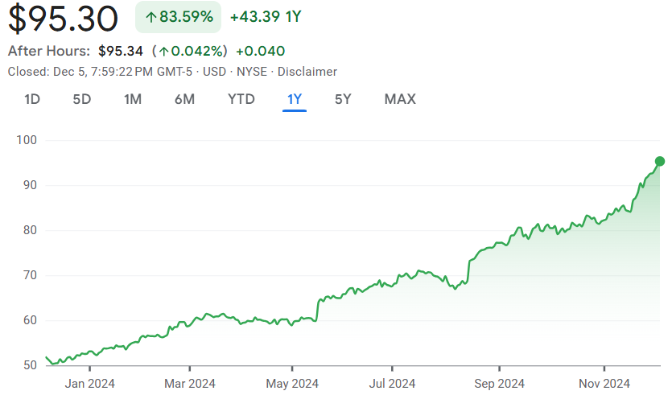
Walmart (NYSE:WMT)
Walmart is no ordinary supermarket chain. It is a chain of hypermarkets, operating outlets that offer not just groceries but household items too. Today, Walmart is the world’s largest company by revenue with over US$680bn generated in CY24, more than Apple or Amazon.
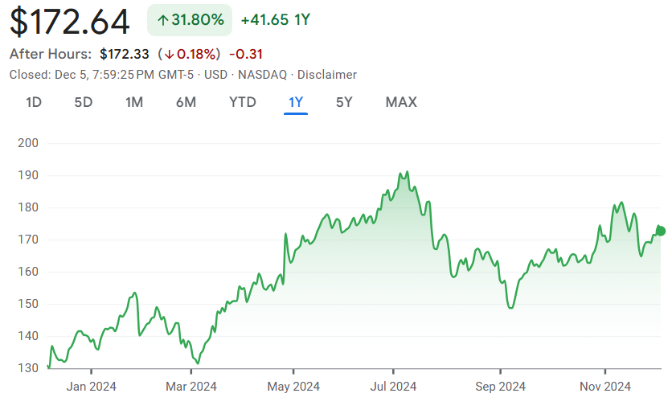
Alphabet (NDQ:GOOGL)
Alphabet is the parent company of Google. It hosts the famous search engine and apps such as Maps, Drive and YouTube, but has a growing Cloud services business, and even an entire division called 'Other Bets' hosting ideas like driverless cars and drone delivery. But the Search Engine remains its most famous and popular outlet, answering billions of queries daily without judging who's asking or what the query is.
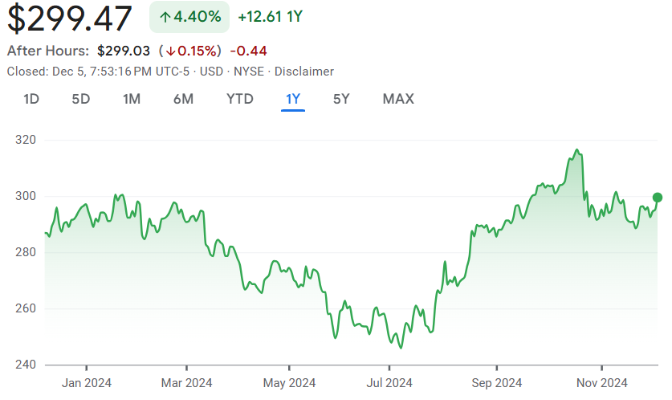
McDonalds (NYSE:MCD)
McDonalds (NYSE:MCD) really doesn’t need an introduction. It is the world’s largest and most famous restaurant chain, with 40k restaurants worldwide, employing over 2.2m people. There are many things unique to it incuding its franchising model, and how Australia is its 4th largest markets (uncommon for such a big company).
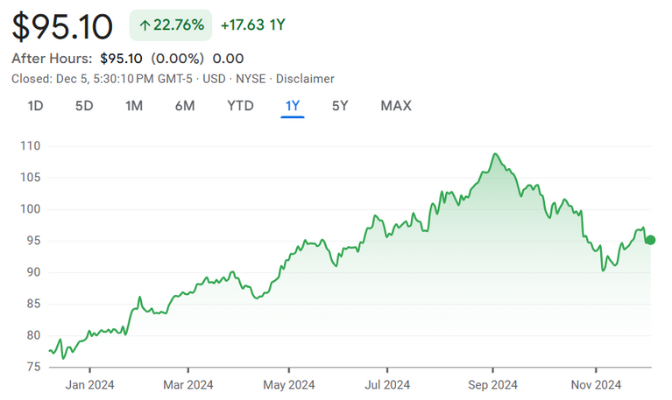
Colgate (NYSE:CL)
In Australia, we know Colgate (NYSE:CL) primarily as a toothpaste brand. But there’s a lot more to this 217-year old company than you may think. It sells various products across personal care, home care and pet nutrition. It sells products all over the world and has been immune to inflation.
10 Best S&P 500 Stocks to Buy Now in 2025
How to Find the Best Stocks to Buy Now on S&P 500
Finding the Best Stocks to Buy on the S&P 500 is no mean feat, requiring a combination of research and strategic analysis. Investors should look for companies with:
- Strong free cash flow,
- A reasonable P/E ratio,
- A solid dividend yield, and
- A robust economic moat including competitive advantages, high market share, brand recognition. High barriers to entry are desirable here.
How to Invest in S&P 500 Stocks
To start investing in S&P 500 stocks, you can either buy stocks individually, or invest in ETFs that track the S&P 500. Individual investors can open brokerage accounts with platforms like Stake and Superhero. Many investors may find them appealing because some offer free brokerage. We would exercise caution in choosing a broker just because of that, given brokers can make money off you in other ways, and because there are other factors to consider in choosing a broker - not all may offer features you may want or need.
For those looking for a more hands-off approach, investing in a ETF that tracks the S&P 500 can be an excellent option. You can invest using a broker and buy and sell just like any other stock. It's essential to consider your risk tolerance and time horizon when making investment decisions.
Regularly monitoring your investments and staying informed about stock market trends and company's performance will help you make better decisions and optimise your returns over the long term.
Pros and Cons of Investing in the S&P 500 Index Stock
Investing in the S&P 500 Index Stock offers several advantages. As noted above, one of the primary benefits is the diversified portfolio it provides, which reduces the risk associated with investing in individual companies. Additionally, the index has a strong track record of delivering solid returns over the long term.
However, there are also drawbacks to consider. The index can be volatile compared to other exchanges, especially during periods of economic uncertainty, requiring a high risk tolerance. Another drawback is that, investors have limited control over the specific stocks included in the index, which may not align with their personal investment preferences.
Despite these challenges, the S&P 500 remains a popular choice for individual investors seeking broad market exposure. Because, as goes without saying, with the higher risk comes higher return potential. The ASX 200 has flatlined since the depths of the GFC in mid-March 2009, but the S&P 500 has gained 600%.
S&P 500 Vs. Other Major Indexes
When comparing the S&P 500 to other major indexes like the Dow Jones Industrial Average and the Nasdaq Composite, several differences stand out.
The S&P 500 offers a broader representation of the U.S. economy, including 500 companies across various sectors, while the Dow focuses on just 30 large-cap companies. This makes the S&P 500 a better indicator of overall stock market performance.
The Nasdaq, on the other hand, is heavily weighted towards technology and growth stocks, leading to higher volatility. Investors looking for a balanced investment approach may prefer the S&P 500 for its diversified portfolio and broad market exposure, whereas those seeking high growth potential might lean towards the Nasdaq.
As for the ASX 200, it is similarly intended to capture a share of the top companies on the exchange. However, the ASX 200 has less companies, and the indice is heavily weighted towards the Big Banks and Major Miners, whilst the S&P 500 has a far more diverse range of sectors.
FAQs on Investing in Best Stock to Buy in US
The ticker symbol for the S&P 500 Index is ^GSPC. This index is a crucial benchmark for stock trading and widely followed by analysts and firms. Monitoring its performance provides insights into the overall health of the business and economic environment.
Our Stock Analysis
Diversifying Portfolios with ASX Consumer Stocks: Opportunities and Risks
The ASX 200 has delivered significant volatility recently, and market participants observing the screens in 2025 understand the turbulence firsthand.…
Is Lendlease (ASX:LLC) out of the doldrums for good?
Lendlease (ASX:LLC) has for the past several years been the classic definition of a ‘value trap’. You think a good…
Here are the 2 most important stock market taxes that investors need to be aware on
As one of two certainties in life, investors need to be aware of stock market taxes. Investors may be liable…
Our 5 ASX Predictions for 2026!
This article outlines 5 ASX Predictions for 2026 that Stocks Down Under puts its neck on the line to assert…
Silver Mines (ASX:SVL) Crashes 22% on Permitting Setback: Buy the Dip or Avoid?
Silver Mines: Buy the dip or avoid? Silver Mines (ASX: SVL) dropped 22% to 18 cents yesterday after announcing it…





